Abstract
Naturally occurring levels of teacher commands, child compliance to those commands, and positive and negative teacher feedback were studied in 19 teachers and 130 children in kindergarten through third grade. Seventy-five of the children had been identified as “making a good social adjustment” to school (high-rated) and 55 children were identified as “not making a good social adjustment” to school (low-rated). Results of intensive observation over a 4-wk period showed that: (a) individual teachers differed significantly in their overall use of commands; however, they did not differentially respond to high- versus low-rated children; (b) high-rated children were more likely to comply with commands than were low-rated children; (c) although the overall level of positive social consequences was extremely low, there was some indication that high-rated children were more likely to receive positive feedback for compliance than were low-rated children; (d) low-rated children received significantly more positive feedback than high-rated children for noncompliance; (e) teachers gave negative feedback for noncompliance at an equal level to both groups of children; and (f) although repeated teacher commands following noncompliance were equal across groups, low-rated children were exposed to significantly higher levels of repeated commands following compliance than were high-rated youngsters.
Keywords: teacher behavior, classroom, assessment, children
Full text
PDF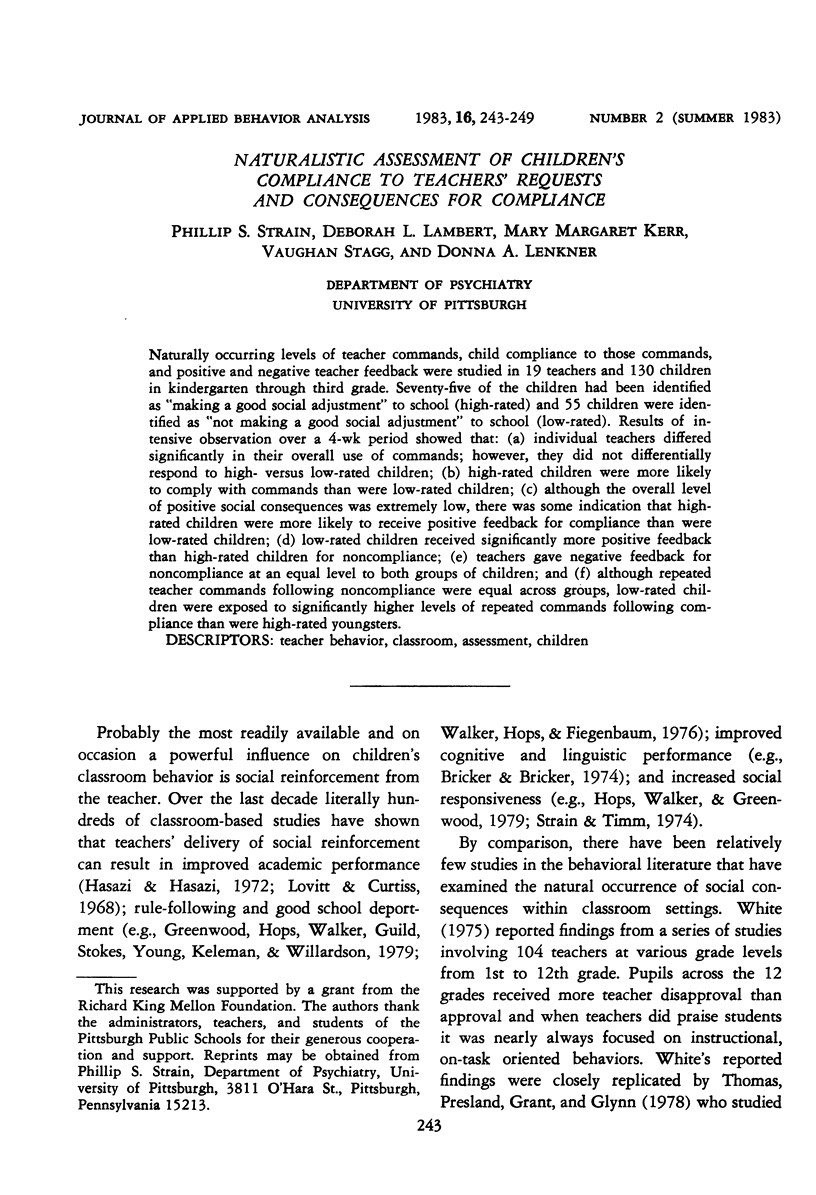
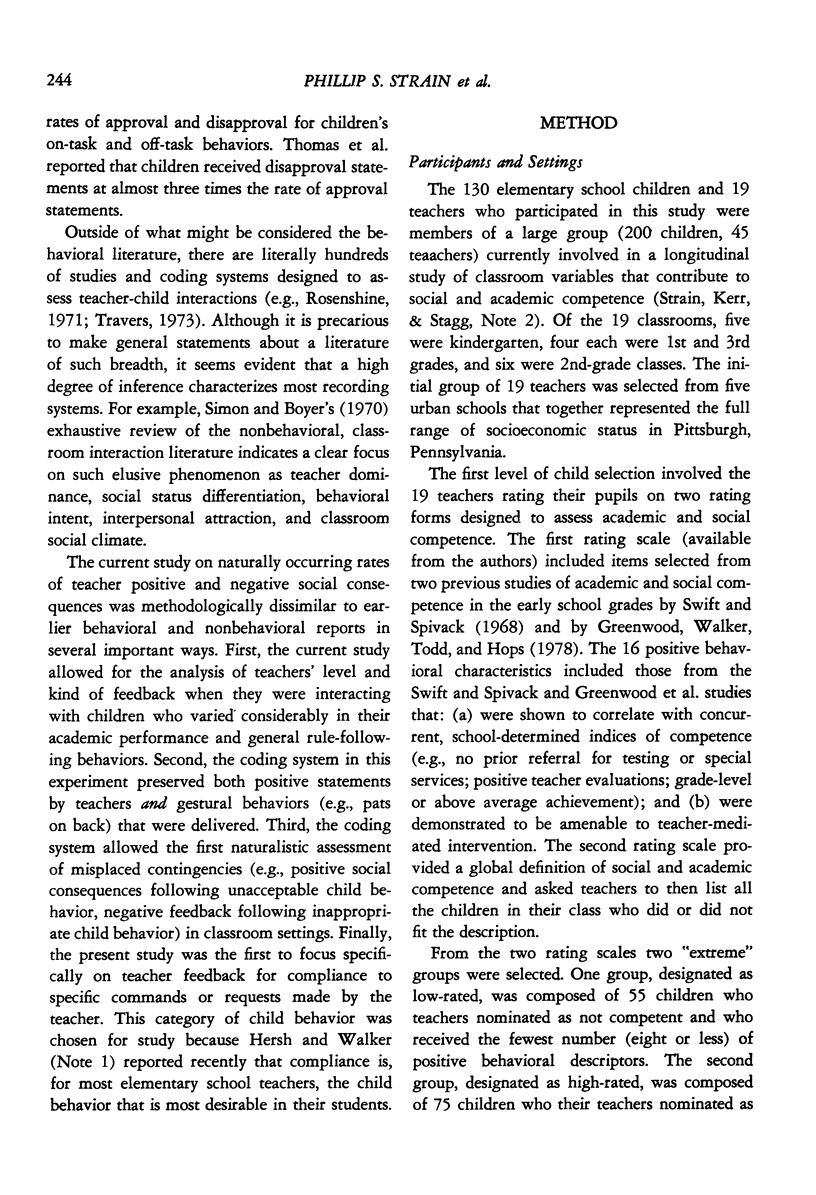
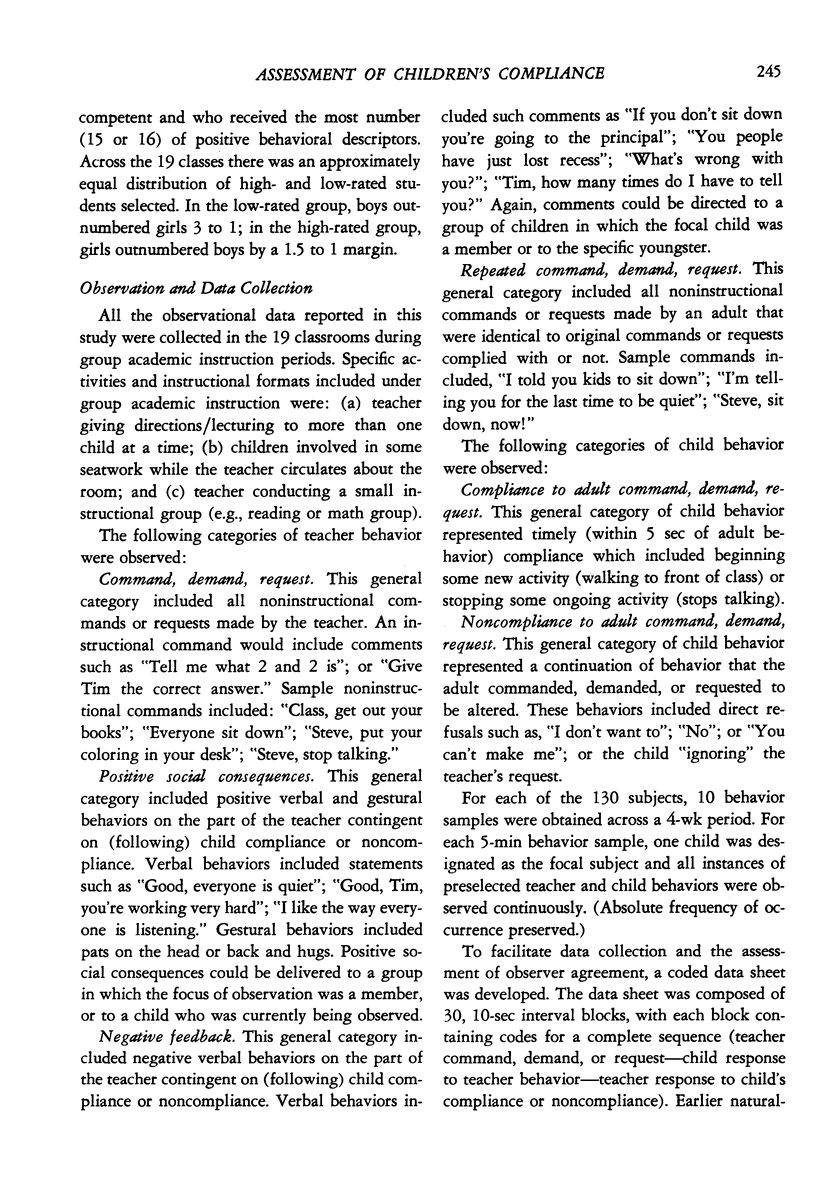
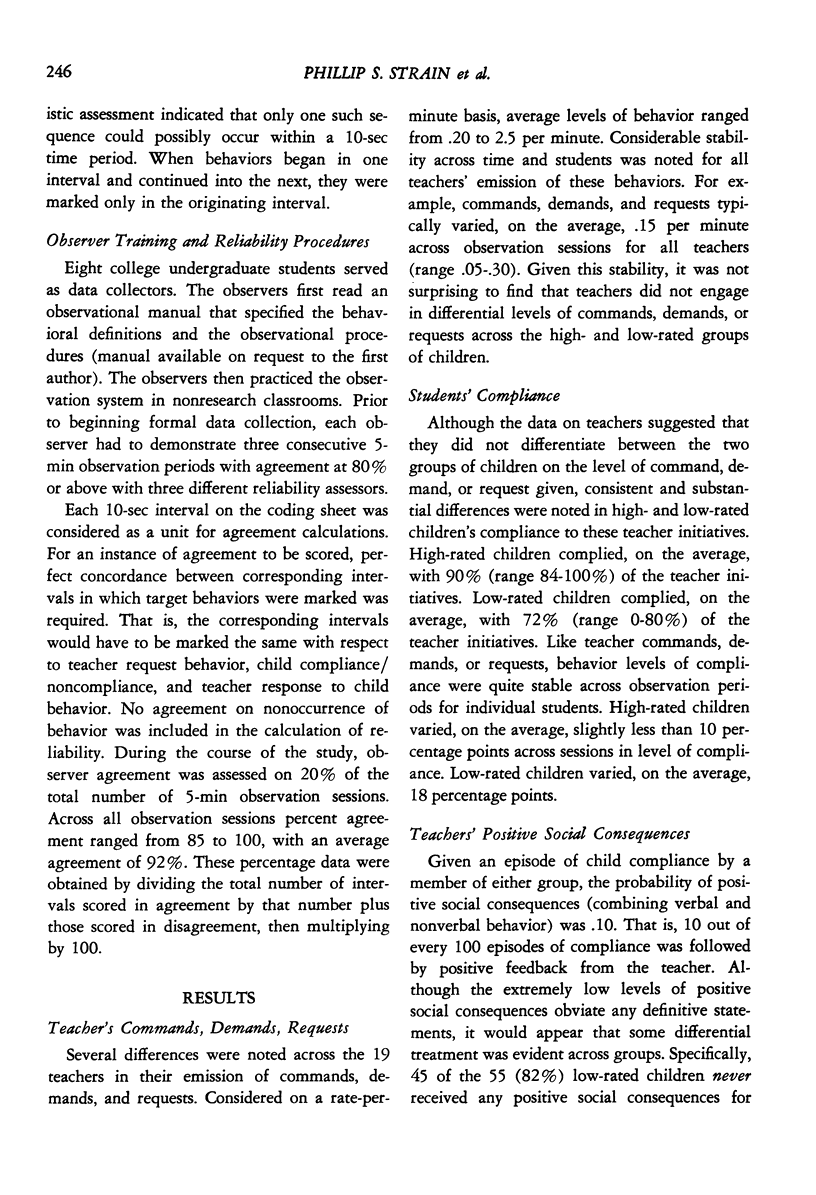
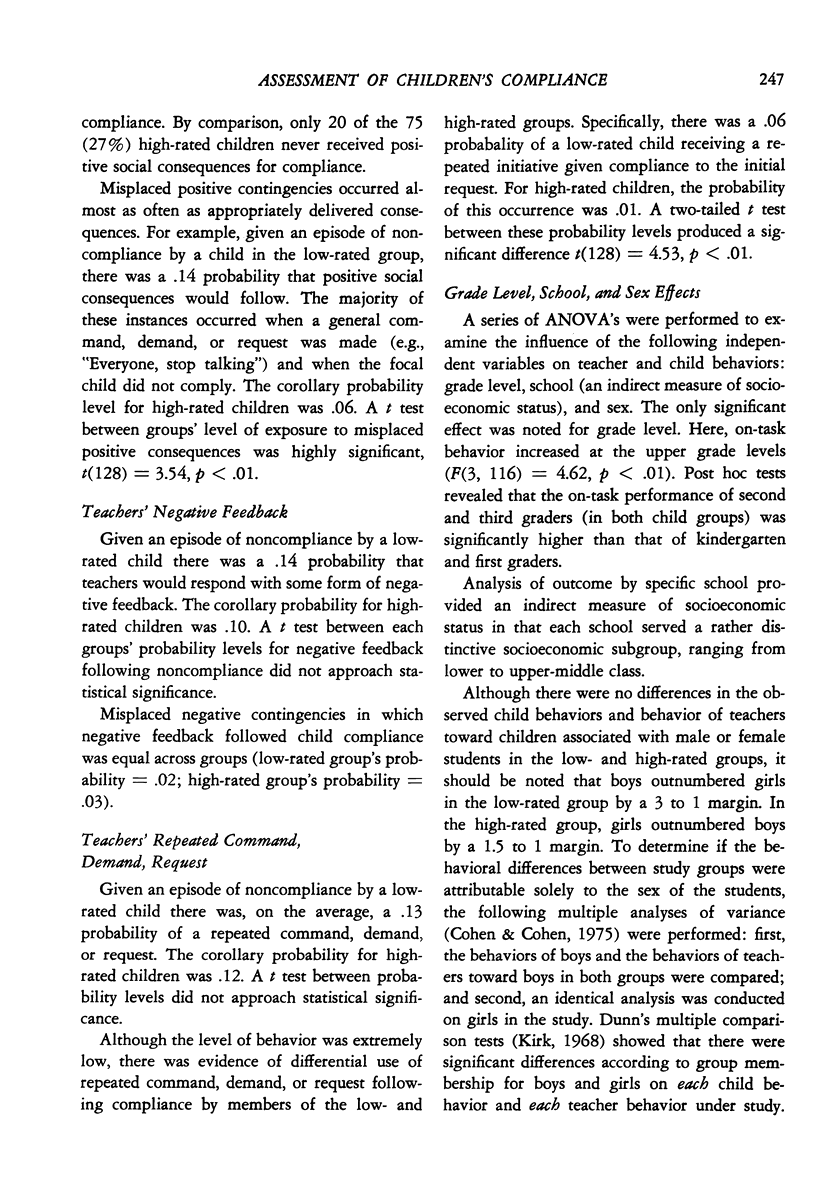
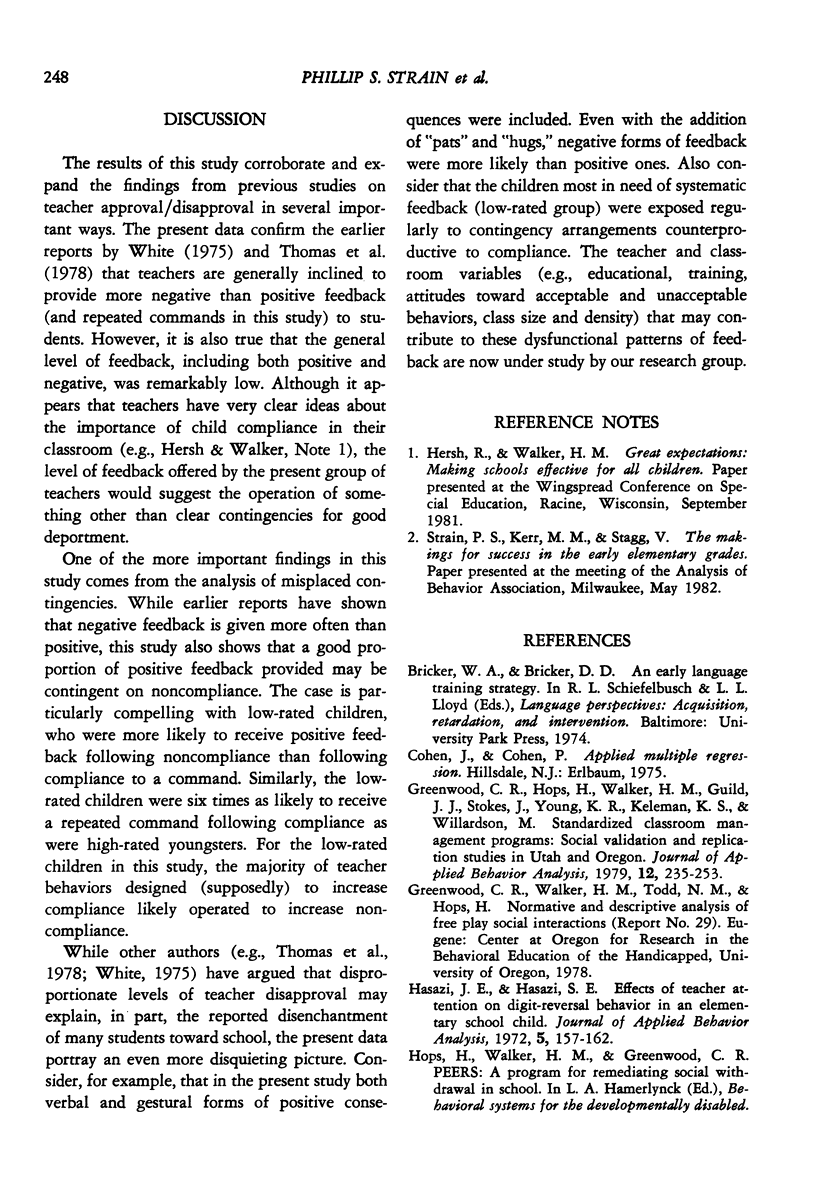
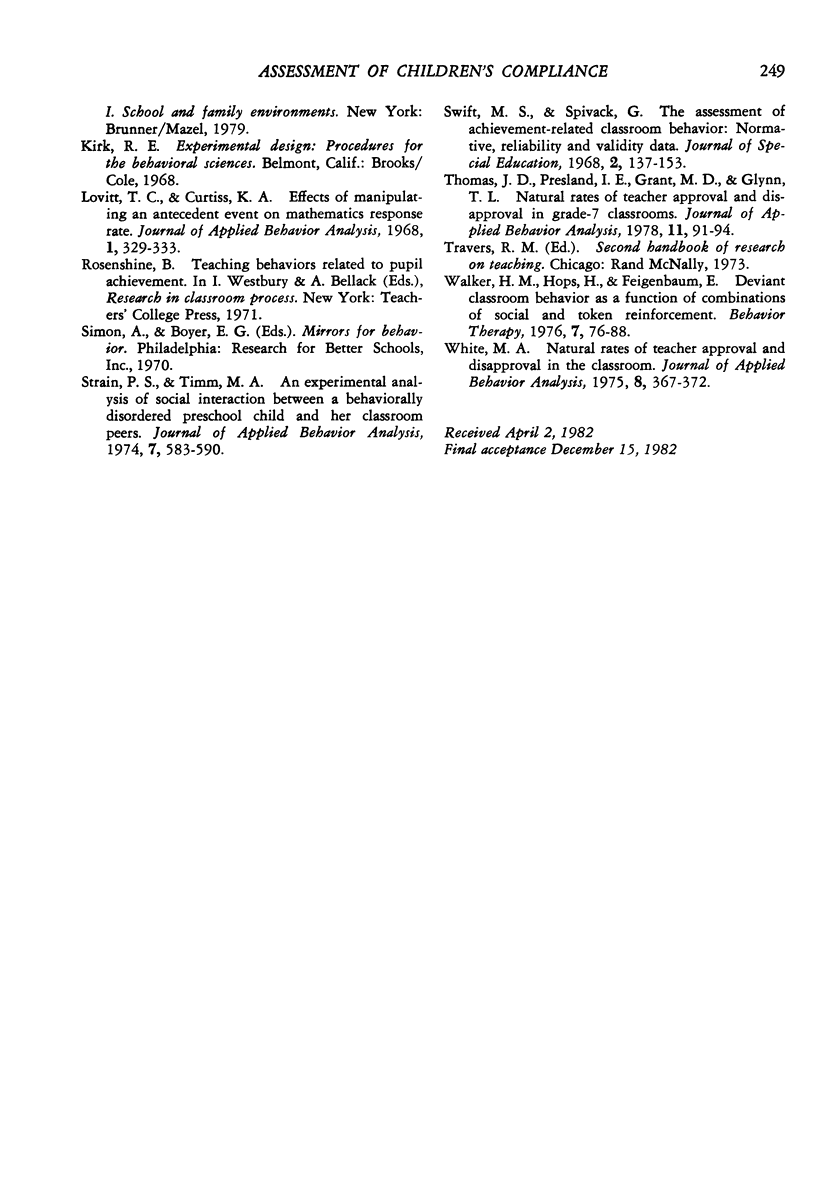
Selected References
These references are in PubMed. This may not be the complete list of references from this article.
- Greenwood C. R., Hops H., Walker H. M., Guild J. J., Stokes J., Young K. R., Keleman K. S., Willardson M. Standardized classroom management program: Social validation and replication studies in Utah and Oregon. J Appl Behav Anal. 1979 Summer;12(2):235–253. doi: 10.1901/jaba.1979.12-235. [DOI] [PMC free article] [PubMed] [Google Scholar]
- Hasazi J. E., Hasazi S. E. Effects of teacher attention on digit-reversal behavior in an elementary school child. J Appl Behav Anal. 1972 Summer;5(2):157–162. doi: 10.1901/jaba.1972.5-157. [DOI] [PMC free article] [PubMed] [Google Scholar]
- Lovitt T. C., Curtiss K. A. Effects of manipulating an antecedent event on mathematics response rate. J Appl Behav Anal. 1968 Winter;1(4):329–333. doi: 10.1901/jaba.1968.1-329. [DOI] [PMC free article] [PubMed] [Google Scholar]
- Strain P. S., Timm M. A. An experimental analysis of social interaction between a behaviorally disordered preschool child and her classroom peers. J Appl Behav Anal. 1974 Winter;7(4):583–590. doi: 10.1901/jaba.1974.7-583. [DOI] [PMC free article] [PubMed] [Google Scholar]
- Thomas J. D., Presland I. E., Grant M. D., Glynn T. L. Natural rates of teacher approval and disapproval in grade-7 classrooms. J Appl Behav Anal. 1978 Spring;11(1):91–94. doi: 10.1901/jaba.1978.11-91. [DOI] [PMC free article] [PubMed] [Google Scholar]
- White M. A. Natural rates of teacher approval and disapproval in the classroom. J Appl Behav Anal. 1975 Winter;8(4):367–372. doi: 10.1901/jaba.1975.8-367. [DOI] [PMC free article] [PubMed] [Google Scholar]


